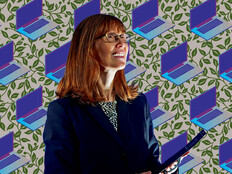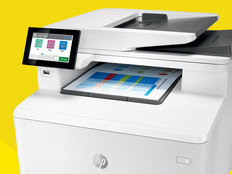3D Printing Goes Postal
There’s no shortage of ideas for reinventing the United States Postal Service. The latest proposal comes from the agency’s investigative arm, which envisions USPS as a future 3D printing hub, capable of offering new digital and streamlined delivery services.
In a July whitepaper, the USPS inspector general estimated that 3D printing could generate $323 million to $646 million per year in increased package delivery revenue, as more small and lightweight products are printed and shipped using the Postal Service.
The 3D printing market is projected to reach $16.2 billion by 2018, and it could provide a lucrative funding stream for the cash-strapped agency.
In total, USPS could see revenue from 3D printing services rise to an estimated $1.1 billion if more items are produced and shipped via personal printers, as opposed to people buying finished products from retailers. But the potential risks and uncertainties around this scenario make it less likely.
Today, public libraries and 3D printing shops offer convenience for local residents looking to bring their digital designs to life, but what if the Postal Service encouraged small and regional 3D printing manufacturers to set up shop near or inside a postal processing plant?
“Many 3D printed products will be manufactured closer to where consumers live but will still need last-mile delivery,” according to the July 7 whitepaper.
The report notes several ways the Postal Service could reap the benefits of this 3D revolution. They include:
1. Partnering with 3D printing companies and possibly bringing some printing on-site at postal facilities, as well as providing microwarehousing to help ensure rapid shipment of 3D-printed items. The Postal Service defines microwarehousing as a service that enables local businesses and e-commerce entities to expedite the movement of goods to consumers. It could involve offering companies short- or long-term space for storage or inventory processing at postal facilities nationwide.
2. Providing a trusted online marketplace for sharing digital designs, or having carriers deliver some files physically. The Postal Service could ensure designs are sent to the platform, 3D-printed and then shipped via same- or next-day delivery.
Many of the designs shared on websites like Thingiverse and Shapeways are unpatented, TechRepublic reported, and intellectual property and copyright disputes are popping up.
3. Using 3D printing to improve its own internal operations, such as printing spare parts to repair vehicles and mail processing equipment more efficiently.
While there have been advances in 3D printing, there are limitations. 3D printing can “lead to weak spots in finished products, given its layer-by-layer construction and potential flaws in some 3D designs,” and “the range of materials available for printing is limited,” the whitepaper noted.
When it comes to 3D printing, the Postal Service IG isn’t focused merely on the small-ticket items — like smartphone cases and key chains — that can be created but critical medical devices such as hearing aids, prosthetic limbs and even parts for F-18 fighter jets that highlight the endless possibilities for using this game-changing technology.
“The question is, who will win from a 3D printing revolution and who will lose? By embracing this groundbreaking technology, the Postal Service could put a compelling 21st-century twist on its historical mission to serve citizens and facilitate commerce.”









